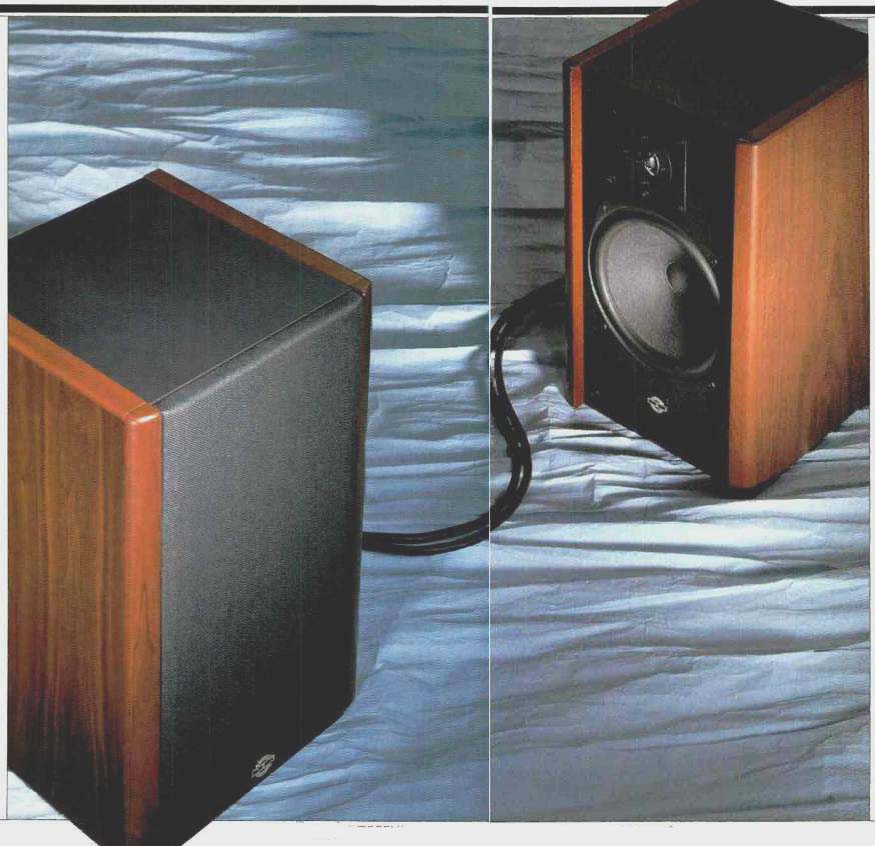
Manufacturer's Specifications:
System Type: Two-way, sealed-box woofer.
Drivers: 8-in. (20.5-cm) woofer and 1-in. (2.5-cm) dome tweeter.
Crossover: 1.5 kHz.
Frequency Range: 40 Hz to 32 kHz.
Sensitivity: 88 dB SPL at 1 watt/1 meter.
Nominal Impedance: 4 ohms.
DIN Power Handling: 80 watts.
Music Power Handling: 100 watts.
Dimensions: 10 1/2 in. W x 17 3/4 in. H x 11 1/4 in. D (26.8 cm x 44.1 cm x 28.6 cm).
Weight: 21.2 lbs. (9.6 kg).
Price: $579 per pair.
Company Address:
MB Quart Electronics, 25 Walpole Park South, Walpole, Mass. 02081, USA.
The MB Quart 280 has to be a special two-way bookshelf speaker just to survive the competition. Loudspeakers utilizing an 8-inch woofer and a 1-inch dome tweeter, and slight variations, are the most common types available to the audio enthusiast. Prices range from under $200 to $4,600 per pair. At $579 per pair, the MB Quart 280 is right in the thick of this saturated market. However, the 280 is imported from Germany and has a multitude of features that sets it apart.
The West German parent company, MB Quart, is experienced. They began in 1963 as a supplier of drivers to other speaker manufacturers. For the past six years, they have successfully marketed systems under their own name throughout Europe. Now they are expanding to North America with the introduction of a line of five speaker systems which are said to have had their sound adjusted to suit American tastes.
Personally, I have always felt that "correct is correct" and that "taste" was best handled by tone controls. How can the European and the American 280s both be correct? Alex Goetzenberger, a company spokesman, explained that Europeans tend to listen in an analytic manner and for shorter periods of time. He said that differences in preference are becoming less pronounced, but Americans tend to have the music playing all the time while they are involved in other activities. Thus, a slightly more prominent midrange and treble spectrum is offered in the European speakers and more bass capability in the U.S.
Quality materials and cabinet construction help differentiate the 280 from many other speaker systems. The particle board panels, an unusual 7/8 inch thick, are manufactured specifically for MB Quart speaker cabinets. They are composed of five layers of differing density and particle size, to achieve strength and damping. The boards are assembled with tongue-and-groove joints and thick wood edge trim.
Extra-thick veneer on the sides ensures that minor scratches can be repaired without sanding, and the front panel has a velvet-like, black "flocked" treatment that is electrostatically applied and is claimed to control unwanted diffraction. The rear, top, and bottom panels are brown plastic laminate with an attractive contrasting texture. Knit fabric in a color matching the speaker's finish, is stretched over a simple particleboard frame to form the removable front panel. Heavy-duty five-way binding posts are partially recessed in the rear panel; their spacing does not allow the use of double-banana plugs.
The titanium dome tweeter, operating above 1.5 kHz, is the most intriguing technical component. Titanium requires expensive processing to form it into a thin dome shape, but its combination of strength and lightness makes it worth the trouble: The first breakup modes can be pushed to well above 20 kHz. (It is interesting to note that the seemingly opposite approach, used in "soft dome" tweeters, can also result in good sound. Highly damped fabric dome tweeters have "benign" breakup modes beginning very low in their frequency range.) The MB Quart 280's crossover frequency of 1.5 kHz is an octave lower than that typically found in two-way systems.
This crossover brings in the tweeter's wide directivity just as the woofer pattern is narrowing down. The problem is to design a tweeter to go that low with good efficiency, low distortion, and reliability.
The 280's tweeter starts with a large magnetic system for efficiency and linearity. An additional ferrite doughnut is glued to the rear of the tweeter, in opposing magnetic polarity, to force flux to stay in the circuit, further increasing efficiency. Voice-coil heat is conducted across the gap to the magnetic circuit by Ferrofluid, which also helps damp the primary mass/suspension resonance. Passages coupling the air volume under the dome with the volume under the surround help to achieve the low resonance frequency needed to respond down to 1.5 kHz. Essentially, the dome gets a larger enclosure.
High-quality components are used in the unit's crossover, and heavy wire runs to the speakers. Crossover slopes are nominally 12 dB per octave.
The woofer has about 13% more surface area than a conventional 8-inch device. This is accomplished within an 8-inch frame width by using a narrow flange with four protruding mounting ears. Other than that, the 280's stamped-frame, paper-cone woofer is not unusual, except for its longer-than-average linear travel.
Unusually good imaging is claimed for this loudspeaker, and it is attributed to wide directivity and diffraction control.
Wide directivity is achieved by using the low 1.5-kHz cross over frequency and a "dispersion ring" in front of the tweeter dome. Diffraction, the re-radiation of sound as it passes over a sharp discontinuity, is claimed to be reduced by flush tweeter-mounting screws and the flocked panel treatment.
The fact that the substantial wood frame and woofer protrusions would likely produce strong diffraction is claimed to be handled by the asymmetrical tweeter mounting. Diffraction is controlled-not necessarily eliminated.
Measurements
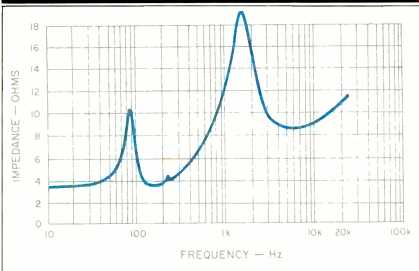
Fig. 1--Magnitude of impedance.
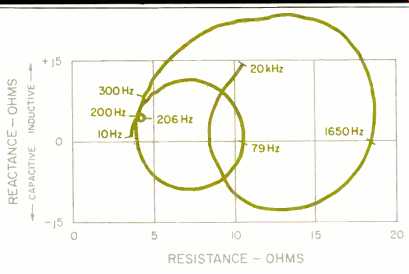
Fig. 2--Complex impedance. Note the slight glitch at about 200 Hz; see text.
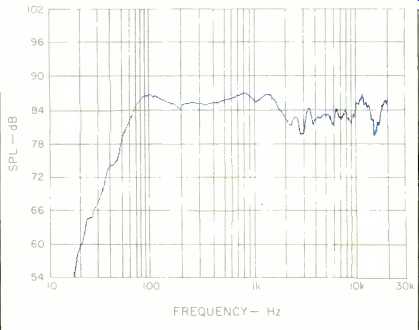
Fig. 3--One-meter on-axis anechoic frequency response, with an input of 1.0
watt into 4 ohms (2.0 V).
Input impedance is shown as a plot of magnitude versus frequency in Fig. 1 and as reactance versus resistance in Fig. 2. Both plots show fairly typical performance for a 4-ohm-rated speaker except for the curious little glitch at just over 200 Hz. To investigate this, I applied a 206-Hz sine wave at about 10 watts. I discovered that one edge of the woofer frame was vibrating heavily. Pressing on it with the blade of a screwdriver stopped the vibration and increased the sound output. I removed the woofer and discovered that the foam gasket between the driver and the box had slipped out of place. With the gasket back in its proper position, the glitch disappeared, but some vibration remained in the speaker frame.
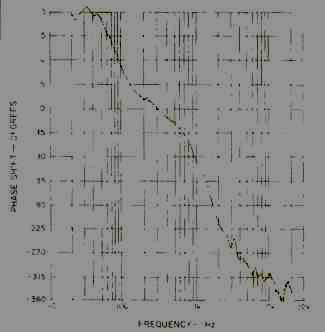
Fig. 4--One-meter on-axis anechoic phase response.
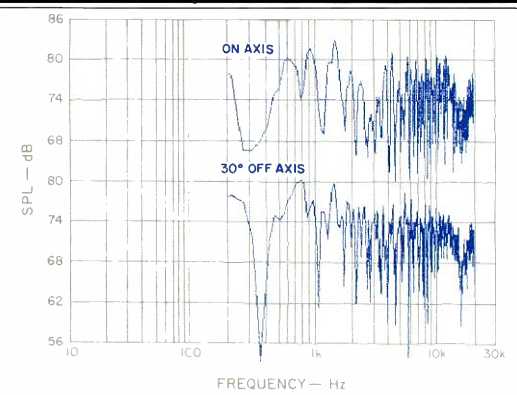
Fig. 5--Three-meter room response measured on-axis and 30° off-axis; for clarity,
off-axis curve has been lowered.
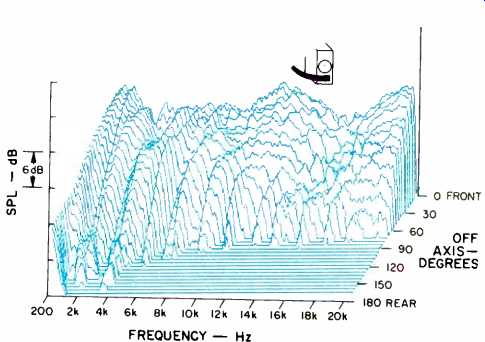
Fig. 6--Horizontal off-axis responses taken from the front, around the side,
to the rear of the speaker.
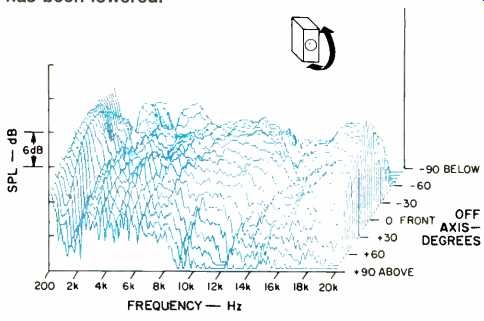
Fig. 7--Vertical off-axis responses taken from below, up the front, to the
top of the speaker.
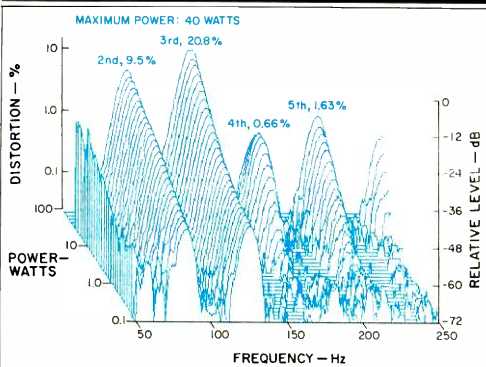
Fig. 8--Harmonic distortion products for the tone E1 (41.2 Hz).
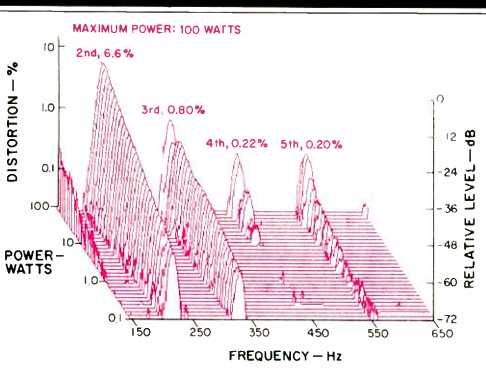
Fig. 9--Harmonic distortion products for the tone A2 (110 Hz).
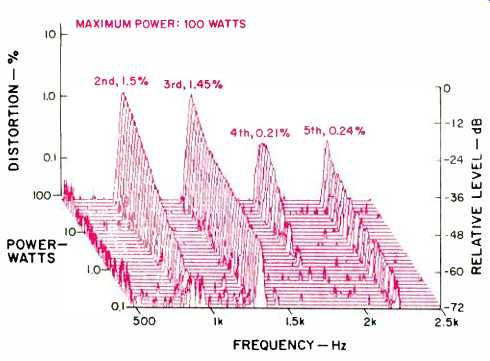
Fig. 10--Harmonic distortion products for the tone A4 (440 Hz).
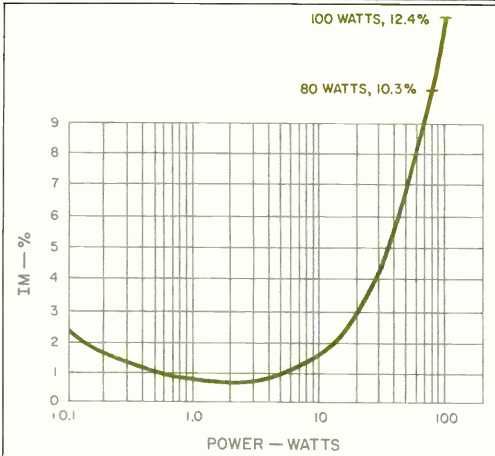
Fig. 11--IM distortion on 440 Hz (A4) produced by 41.2 Hz (E1) when mixed
in 1-to-1 proportion. Readings below 3 watts are due to noise.
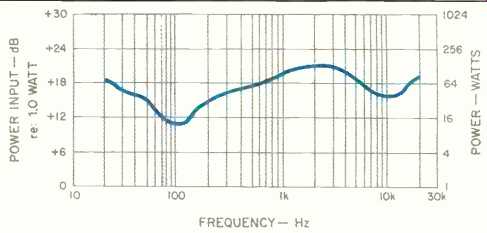
Fig. 12--Power linearity.
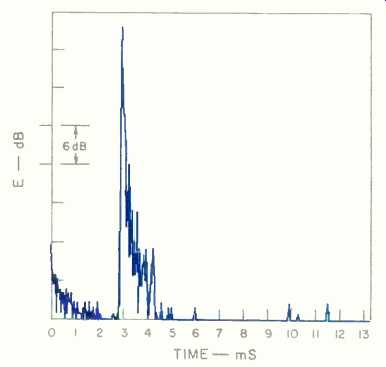
Fig. 13--One-meter on-axis energy vs. time response.
Figure 3 is the on-axis frequency response measured at 1 meter without the influence of room reflections. Sensitivity is about 85 dB below 1.5 kHz with 2 V input. MB Quart's claim of 88-dB sensitivity appears to be made using 2.83 V input, which is equivalent to 1 watt into an 8-ohm speaker. The 280, however, is a 4-ohm unit, but using the same drive levels, the measurements agree. Look at the power your amplifier will provide into a 4-ohm load and consider the 85-dB figure. This sensitivity is a bit on the low side, but reasonable. An amplifier capable of 100 watts per channel should produce peaks around 108 dB SPL in a typical room.
Low-frequency response shows the roll-off of 12 dB per octave expected from a sealed-box system below its resonance frequency, which is 79 Hz for the MB Quart 280.
Apparently, this system is intentionally a little underdamped, which gives a slight boost at 100 Hz and extends the -3 dB frequency to about 60 Hz. For the same cabinet size, de signing for higher sensitivity would have the indirect effect of increasing damping and raising the cutoff frequency. The upper range is reasonably smooth but is suppressed about 3 dB above 1.5 kHz. (Could this be the tweak to Americanize the 280? I think the subject is a little more complicated, and I will go into it further when we look at the directivity plots.) The titanium tweeter shows no sign of giving up by the end of the plot at 20 kHz.
Phase response (Fig. 4) is just what one would expect of a classically designed two-way loudspeaker with a second order crossover. Phase lead is expected at very low frequencies, where the response is rising. Phase passes through 180° in the midrange, due to the crossover, and lags a further 180° due to the eventual tweeter roll-off. Each speaker in this pair matches the other quite closely.
The on-axis and 30° off-axis 3-meter room response (Fig. 5) includes the important early reflections that might be found in any listening room if the speakers are positioned as I used them. The locations which worked best for me in the listening test were 19 inches off the floor, 48 inches away from the side wall, and 36 inches in from the wall behind the speakers. The plots in Fig. 5 show reduced output at 300 Hz, which is traceable to sound bouncing off the floor on its way to the microphone. The longer path delays the signal such that 300 Hz suffers a partial cancellation. Above 300 Hz, the average response is uniform and extended, even at 30° off-axis.
Horizontal directivity versus frequency is shown in Fig. 6, a "3-D" plot. It is wide at low frequencies, as expected from a physically small loudspeaker. Directivity gradually narrows at high frequencies but never becomes overly directional. Something unusual to note is that there is no evidence of the narrowing directivity from 1 to 3 kHz found in most two-way speaker systems. I would consider this a technical plus for the MB Quart 280, but I have heard many fine systems that do exhibit midrange narrowing. Perhaps the 280's on-axis response in this range must be suppressed as we observed it to be in Fig. 3--in order to reduce total input to the room. I do not want to criticize this unit for being "too good"; rather, I am wondering how other speakers that do not measure as well on this can sound so good.
Vertical off-axis plots--taken from below, up the front, to above the speaker--are shown in Fig. 7. The same wide directivity is evident, and there is the expected interference between the two drivers in the crossover range for angles well off-axis.
Linearity of the MB Quart 280 was measured in three different ways. First, the plots of Figs. 8, 9, and 10 show the harmonics generated for the musical tones E1 or 41.2 Hz, A2 or 110 Hz, and A4 or 440 Hz in steps from 0.1 to 100 watts.
Since the lowest fundamental is below the system's operating range and thus down in level, the harmonics, which are in the speaker's range, appear to be very high. In the earlier listening test, the 280 handled this input in a dignified, if quiet, manner. The plots at higher test frequencies are more reasonable, with 440 Hz showing quite low distortion.
The second linearity test is to observe the effect of a low tone (E1 or 41.2 Hz). On a high tone (A4 or 440 Hz). This is the intermodulation test plotted in Fig. 11. Distortion remains below 3% until about 20 watts input. Above this power level, the lower test frequency begins to move the voice-coil out of the magnetic gap twice during each cycle. This produces a cyclic modulation of the 440-Hz tone being measured. A distortion level of 10%, an objectionable amount, is reached at 80 watts.
The third linearity test checks midrange and treble as well as lower frequencies. Increasing power is applied until the acoustic output fails to track the input by 1 dB. Figure 12 plots the power input for this mistracking. It can be seen that it doesn't pay to use ultra-high powered amplifiers with this small loudspeaker.
Figure 13 shows the energy versus time response of the 280. Ideally, the test pulse's energy should be reproduced at one instant in time. The tested unit's response is about as close to this as you are likely to get from a speaker. Obviously, diffraction, which would show up as a widening of the pulse, is not a problem.
Use and Listening Tests
As usual, listening tests were performed before the technical measurements were made. More listening after the testing convinced me that the loose gasket found in one of the speakers had not had a noticeable effect on the sound. I found placement and aiming of the MB Quart 280s to be relatively noncritical. Spaciousness and smoothness of bass response were best, however, with the speakers well out from the walls and 19 inches off the floor. They could be placed next to other small speakers without ill effects, which led me to make lots of comparison tests in different rooms.
In these comparisons, the performance of the 280s was consistently good in all respects, while that of other speakers varied. Few could match the balanced, uncolored character of the 280s. Of those that did, fewer still had as extended a frequency range. The MB Quarts rendered the sound of recordings with a close-up perspective more accurately than their competitors did, and made solo instruments and voices sound like they were forward and present in the room. Some other models, comparable in size and price, sacrificed this presence for an improved sense of depth and spaciousness.
Speakers are the weakest link in the sound-reproduction chain. Frequently, they are also the most visible and the most costly. In the price range of under $600 per pair, you can't get everything from any speaker. You should concentrate on those qualities that mean the most to you. For low coloration, good range and dynamics, and a forward presence, the MB Quart 280 is a top contender. Visual appeal and convenient size complete the package. This loudspeaker is likely to be the best choice for many audiophiles.
-David L. Clark
(Adapted from Audio magazine, Dec. 1988)
Also see:
MB Quart Domain D55 Speaker (June 1997)
Quart 490MCS Speaker (Feb. 1992)
Canton Ergo 100 Speaker (Mar. 1992)
Celestion UL-10 Loudspeaker (Jan. 1977)
Martin-Logan Monolith IIIx Loudspeaker (Sept. 1991)
= = = =